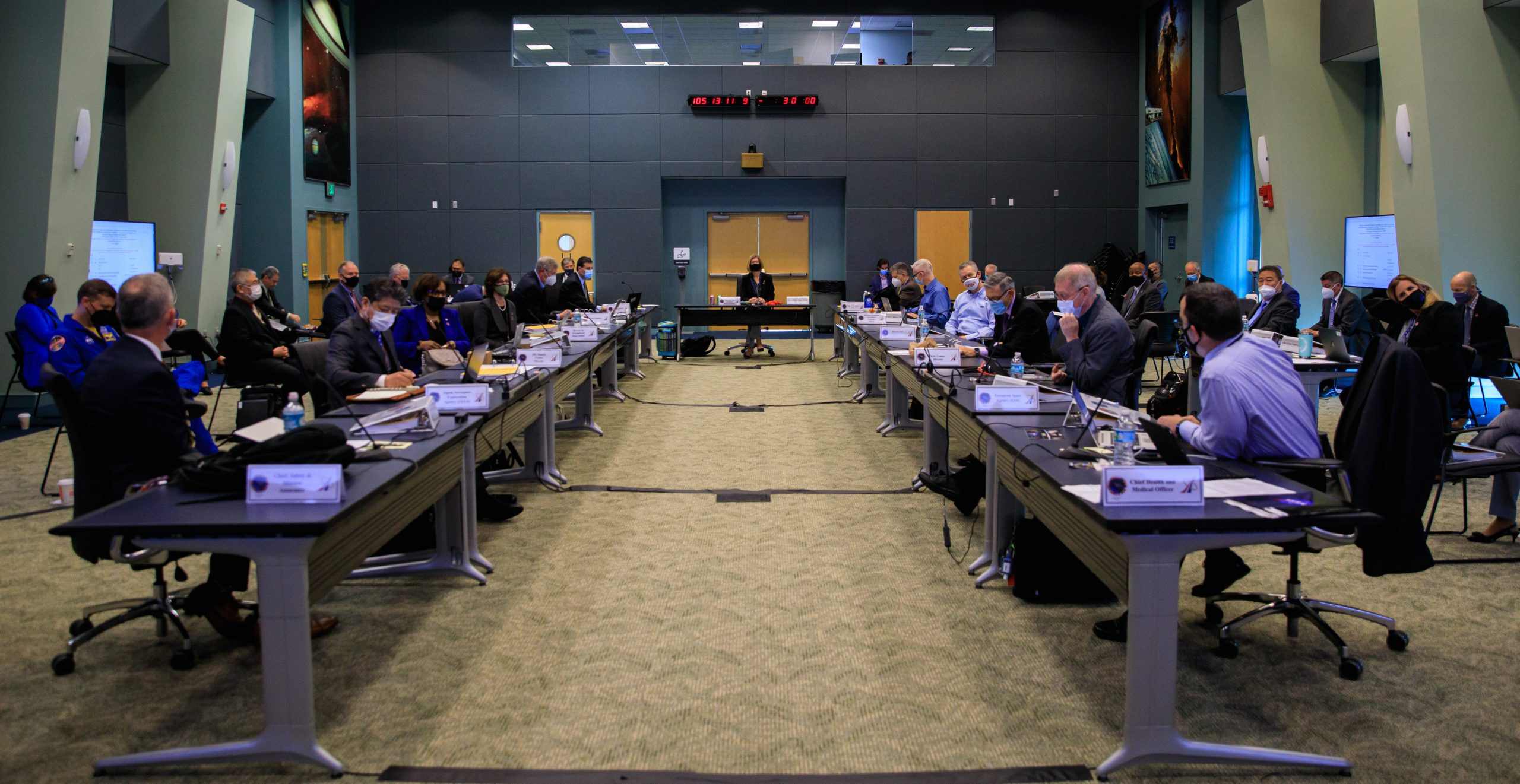NASA, SpaceX are 'go' to launch Crew-2 astronauts to space station on Earth Day

SpaceX and NASA are officially "go" to proceed with launching four astronauts to the International Space Station next week, with the completion of a critical flight readiness review on Thursday (April 15).
The Crew-2 mission is scheduled to lift off next Thursday (April 22), which also happens to be Earth Day. A SpaceX Falcon 9 rocket and Crew Dragon spacecraft will launch from historic Pad 39A at NASA's Kennedy Space Center in Florida. It will be the second flight of this particular Crew Dragon; the same capsule, named "Endeavour," carried NASA astronauts Bob Behnken and Doug Hurley to and from the space station last year for the Demo-2 test flight.
Inside the Crew Dragon will be four Expedition 65 crewmembers, who will spend about six months in space: NASA astronauts Shane Kimbrough and Megan McArthur, Japan Aerospace Exploration Agency (JAXA) astronaut Akihiko Hoshide and European Space Agency (ESA) astronaut Thomas Pesquet.
Related: SpaceX's Crew-2 astronaut mission for NASA: Live updates
"The flight readiness review was very successful; we only had one exception," Kathy Lueders, NASA's head of human spaceflight, said in a news conference Thursday. "It needs to be cleared up in the next few days because it's got to get resolved before the static fire [test]," which is currently scheduled for Saturday (April 17), she added. (Static fires, in which rocket engines are ignited while the vehicle remains anchored to the ground, are a common pre-flight checkout.)
Bill Gerstenmaier, vice president of build and flight reliability at SpaceX (and former NASA human spaceflight chief), said in the same news conference that the teams "discovered there was a potential loading error, where we may actually be loading a little extra oxygen in our [Falcon 9] tanks." SpaceX's Falcon 9 rockets use liquid oxygen and rocket-grade kerosene for propellant.
Gerstenmaier added that other Falcon 9 missions have been flying successfully in this same configuration, but SpaceX only recently discovered the issue while testing the rocket on the ground in Texas. The company detected slightly higher levels of liquid oxygen than expected, but they have not yet figured out the cause of this discrepancy.
Breaking space news, the latest updates on rocket launches, skywatching events and more!
"We reviewed that with the NASA team today, but we didn't have enough time to really go over all the data and look at all the consequences of what that could mean," he said. "We're going to take the extra step" to review the issue and determine if it could pose a risk to the astronauts (or other future Falcon 9 launches).
If the liquid oxygen issue is resolved as expected and all else goes according to plan, Crew-2 will lift off at 6:11 a.m. EDT (1011 GMT) on April 22 and dock with the International Space Station just over 23 hours later, at 5:30 a.m. EDT (0930 GMT) on April 23. A final launch readiness review is scheduled for April 20.
A backup launch window is available on April 23. After that, Crew-2 could launch on either April 26 or April 27, Steve Stich, NASA's Commercial Crew Program manager, added in the news conference.
You can watch the Crew-2 mission live here on Space.com, courtesy of NASA TV.
Email Hanneke Weitering at hweitering@space.com or follow her on Twitter @hannekescience. Follow us on Twitter @Spacedotcom and on Facebook.

Hanneke Weitering is a multimedia journalist in the Pacific Northwest reporting on the future of aviation at FutureFlight.aero and Aviation International News and was previously the Editor for Spaceflight and Astronomy news here at Space.com. As an editor with over 10 years of experience in science journalism she has previously written for Scholastic Classroom Magazines, MedPage Today and The Joint Institute for Computational Sciences at Oak Ridge National Laboratory. After studying physics at the University of Tennessee in her hometown of Knoxville, she earned her graduate degree in Science, Health and Environmental Reporting (SHERP) from New York University. Hanneke joined the Space.com team in 2016 as a staff writer and producer, covering topics including spaceflight and astronomy. She currently lives in Seattle, home of the Space Needle, with her cat and two snakes. In her spare time, Hanneke enjoys exploring the Rocky Mountains, basking in nature and looking for dark skies to gaze at the cosmos.

